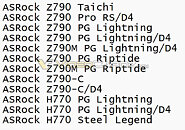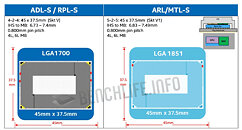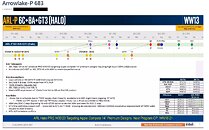
BIOSTAR to Release Intel 600 Series Motherboard BIOS Updates to Support Next-Gen Processors
BIOSTAR, a leading brand of motherboards, graphics cards, and storage devices, today announces a critical BIOS update for Intel 600 series motherboards to support the latest 13th generation Raptor Lake CPUs.
Preparing for the imminent release of the latest Intel processors, BIOSTAR is already prepping up a BIOS update that will enable users to upgrade their 600 series motherboards directly to the latest processors. BIOSTAR has put a considerable amount of thought and work into the upcoming BIOS update, which promises seamless integration and flawless performance numbers that rival any other competitor in the market.
Preparing for the imminent release of the latest Intel processors, BIOSTAR is already prepping up a BIOS update that will enable users to upgrade their 600 series motherboards directly to the latest processors. BIOSTAR has put a considerable amount of thought and work into the upcoming BIOS update, which promises seamless integration and flawless performance numbers that rival any other competitor in the market.














































